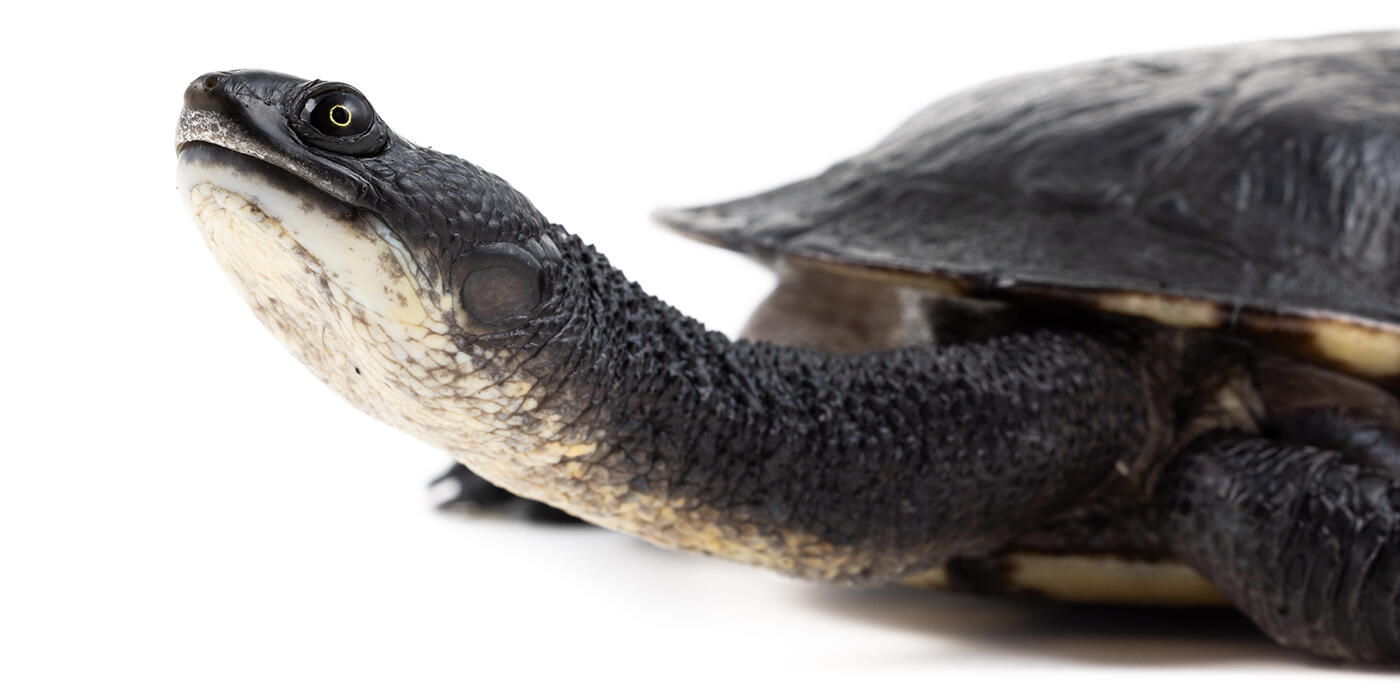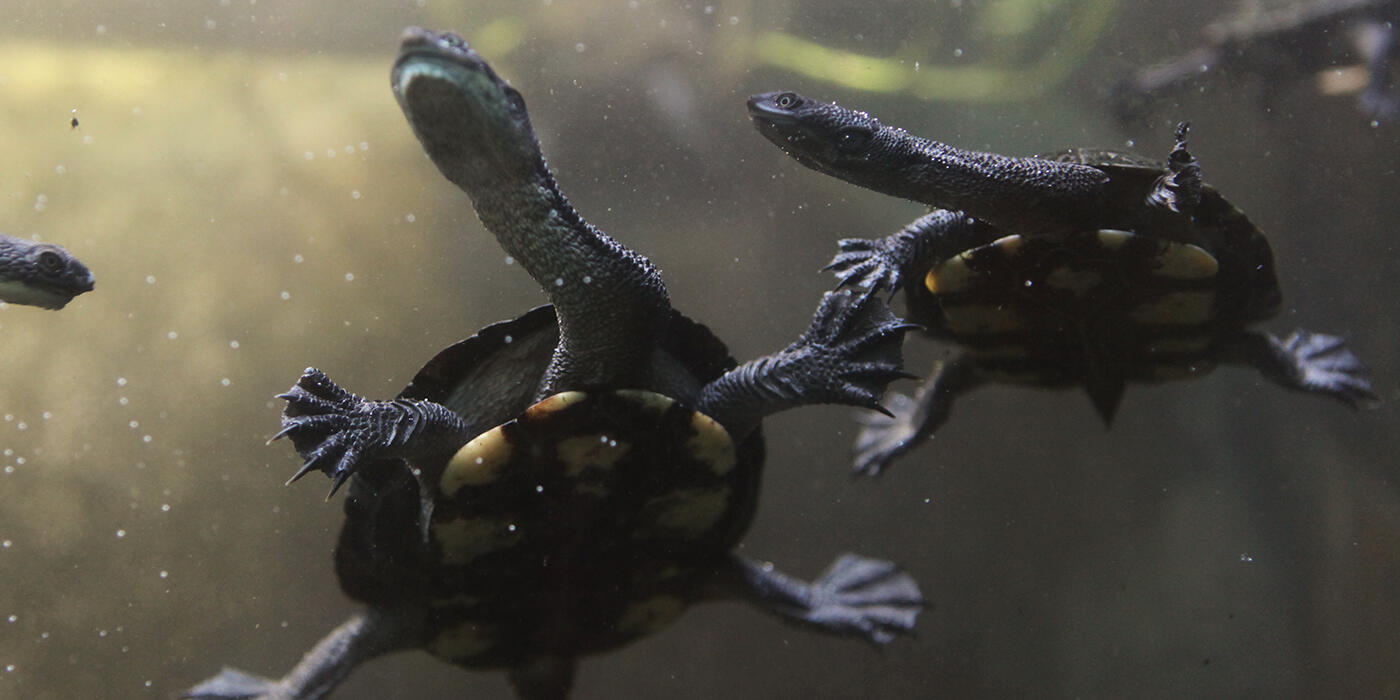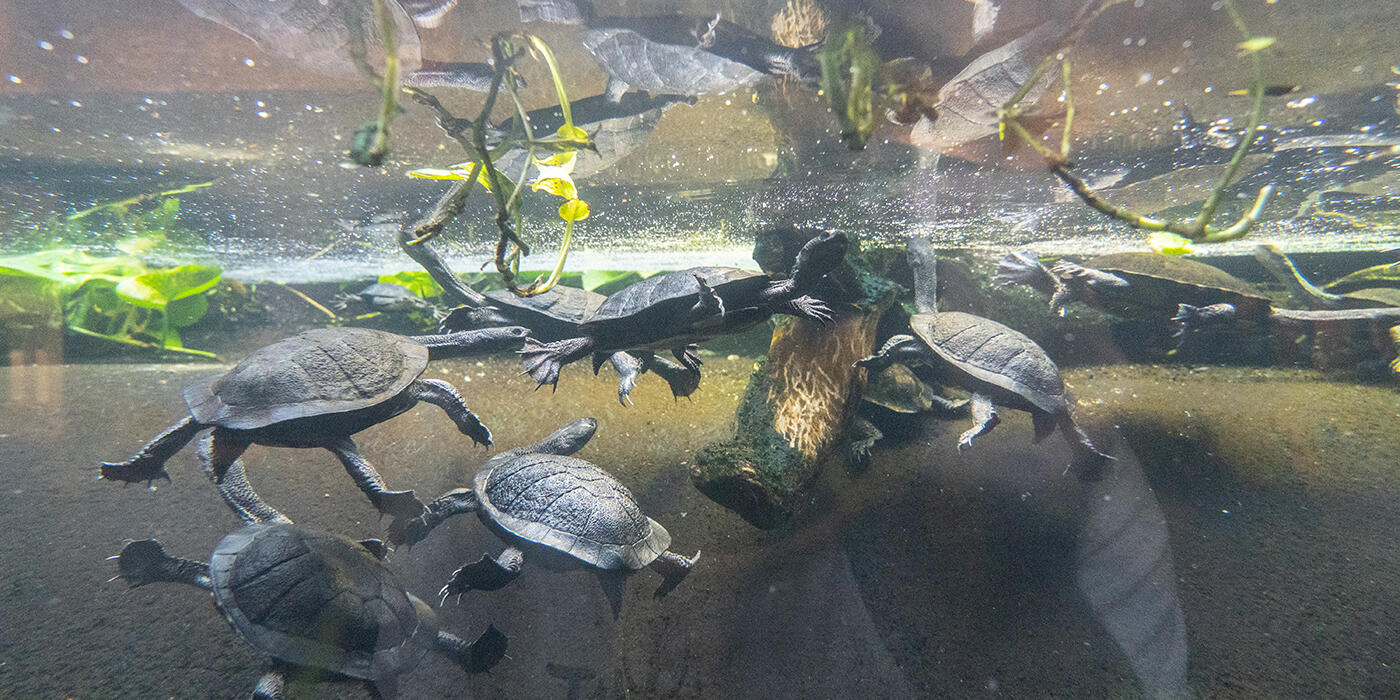Physical Description
Size
Native Habitat
Long-necked turtles are native to southeastern Australia, ranging from the Wilton River to the Murray River, and the entire Murray-Darling Basin. They are a semi-aquatic species, spending time both in the water and on land. They sometimes inhabit streams and rivers but tend to be found in slow moving water, such as swamps or wetlands.
Snake-necked turtles spend most of their time on the bottom of bodies of water. At times when conditions get too dry they may estivate, meaning they begin a long state or torpor or dormancy. When estivating, they typically burrow into fallen leaves on the forest floor for an extended period of time until rains return.
Lifespan
Food/Eating Habits
Australian snake-necked turtles are carnivores and prey on a variety of aquatic species, including invertebrates, fish and plankton. They may also eat terrestrial insects.
Snake-necked turtles catch prey by using a strike-and-gape action, lowering their hyoid bone to decrease water pressure and create a vacuum.
At the Smithsonian's National Zoo, snake-necked turtles eat shrimp, rickets, smelt, worms and turtle pellets.
Reproduction and Development
Snake-necked turtles' mating season is from September to October. These turtles are polygynandrous, meaning both males and females may have multiple mating partners during a breeding season, so males are more active during the mating season and cover more distance in order to increase their potential mating chances.
Males court females by head bobbing and cloacal touching, and copulation occurs in the water. Nesting season takes place in late spring or early summer. Females are more active during this time, looking for the best nesting site. They dig nests near the water where they lay their eggs. They may lay up to three clutches of eight to 24 eggs per year. The incubation period is 120 to 150 days, and the eggs hatch in the fall.
Conservation Efforts
The largest threat to Australian snake-necked turtles is the introduction of the nonnative red fox, which preys on nests sites destroying many of the turtle's eggs. Due to the long lives of snake-necked turtles, this has not yet been a noticeable problem. However, in areas with high predation there is a clear population shift and very little to no juvenile turtles. The snake-necked turtle would greatly benefit from programs to control red fox populations.
Australian snake-necked turtles are also threatened by habitat loss and climate change. Urbanization obstructs the movement of these turtles, which naturally travel long distances, especially for breeding. Additionally, changes in water usage and climate change can make previously inhabited bodies of water unsuitable. For example, 75 percent of the water in the Murray-Darling Basin has been redirected for human use.
Lake Mokoan used to be a semi-permanent wetland but has since been converted to a permanent lake, which causes toxic algal growth and reduced food availability. Federal legislation prevents the capture or hunting of native wildlife, protecting the snake-necked turtle from being captured for the pet trade or for meat. In addition, there are some habitats that are protected in the form of national parks.
Help this Species
Reduce, reuse and recycle — in that order! Cut back on single-use goods, and find creative ways to reuse products at the end of their life cycle. Choose recycling over trash when possible.
Choose your pets wisely, and do your research before bringing an animal home. Exotic animals don’t always make great pets. Many require special care and live for a long time. Tropical reptiles and small mammals are often traded internationally and may be victims of the illegal pet trade. Never release animals that have been kept as pets into the wild.
Smithsonian's National Zoo and Conservation Biology Institute. (n.d.). Australian snake-necked turtle. Retrieved January 14, 2026, from https://nationalzoo.si.edu/animals/australian-snake-necked-turtle
Animal News






